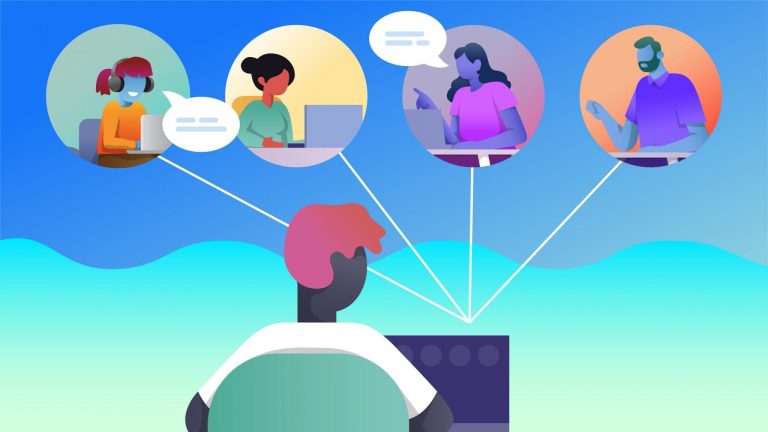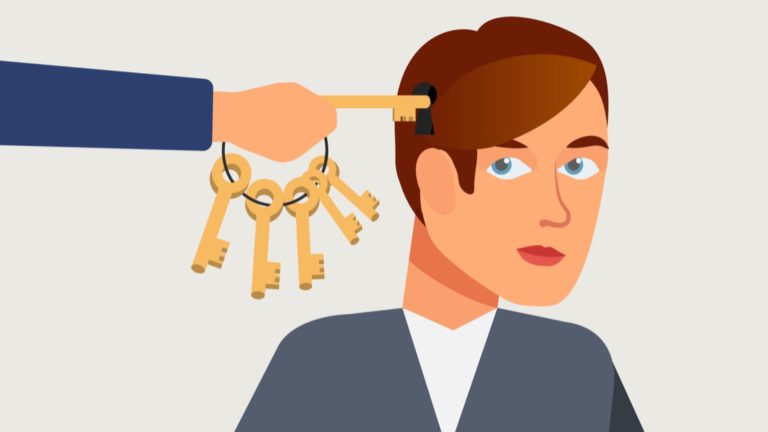Free sales training video content covering some of the program topics from our online sales training courses. As a salesperson, you know that selling is an exchange of your product or service in return for money from the buyer. The key is streamlining your sales process so that your efforts result in higher sales numbers and higher returns on the sales time you invest. Learn how to have more focused sales conversations and how to uncover pain points, challenges, and needs. Plus sales training that covers all the sales steps and stages in the modern sales process.
Our sales training is all about customer-focused selling. This is about selling from the other person’s perspective. While this sounds simple, it is a sales process that requires attention and practice. The skills associated with customer-focused selling apply to every sales conversation, phone call, meeting presentation, and interaction throughout the process. This makes selling a little bit like learning to play chess: the rules are not that difficult, but you need to repeatedly train on playing the game to become highly skilled. Enjoy our other free sales training video lessons on our blog and below.
The Sales Cycle
Learning about sales as a cyclic series of activities can help you organize your activities and keep focused. A traditional sales cycle has four stages: initiate, build, manage, and optimize. Our sales training programs explore each and every aspect of the sales cycle. We will provide information about each stage and encourage you to think about what you are currently doing at that sales stage and what new activities you might want to take on. Here is a look at the basic sales cycle:
Initiate: Find new opportunities and establish relationships that focus on identifying and solving your clients’ needs. These relationships will evolve in many ways as you engage in meaningful sales conversations to uncover opportunities.
Build: Convert those opportunities into a sales pipeline by building trust and credibility with prospects and customers.
Manage: Manage the relationships and focus on serving your customers by offering insights and solutions, resolving problems, meeting their needs, and getting their agreement to buy.
Optimize: Grow the relationship with consistent results and problem solving. This is the time to set up long-term relationships through additional problem solving, business building, and referrals.
Tips for Sales Success
1. Do not be afraid of failure; learn to be comfortable with the uncomfortable
2. Make yourself a resolution to succeed; only you can determine what success means
3. Have a plan. A goal without a plan is a dream
4. Be a person of action; nothing happens until you do it
5. Change your thoughts; your positive mindset is your ally
6. Ask for what you want; fear is just an emotion
7. Avoid procrastination; embrace effort and new habits
8. Look after your mental health; exercise your body and brain
9. If you can’t find a way, make a way—never lose focus
10. Take responsibility—your words, your actions, your mistakes, your ideas, your behavior
Can you sell, or, more importantly, do you want to sell? Very few people, when they were at school or university, chose selling as their future career. Research has shown that most salespeople got the job by opportunity or necessity. In the last few years there has been a massive change of emphasis, with non-sales people actively taking ownership of winning new clients and developing those relationships into new business opportunities. As a result people who previously would never have thought that part of their profession would be selling, are in fact doing just that. Through necessity and to keep themselves employed, people are learning the skills of selling.
So can you sell? Of course you can, but only if you really want to and learn how to.
It will take more than a free sales training lesson or two. So, it is probably worth noting, as a motivation, that as you become successful at winning new business, you will also increase your income, and for most people this is a good enough reason. Good and successful salespeople undertake constant sales training and sell with conviction. It is therefore worth establishing at the outset what good salespeople actually do. Very simply it is that, given the chance of engaging with a prospective customer, they will build relationships, uncover opportunities and close the sale. Equally they will create an experience that will make the customer come and buy again. Once a salesperson has built that trust and relationship, the customer will be open to referring the salesperson or the company to friends, family and connections. This is what professional selling can achieve. This is what you can do comparatively easily.
Therefore, it is imperative that you train to learn all the sales skills and not just skim over a free sales training video. To sell successfully today, you must be able to create real value and demonstrate the results that your product or service will achieve for your customers. There will be many occasions when your product or service will not be the cheapest, but this must not stand in the way of your belief in it. What matters here is that you can outline the advantages your product or service delivers, you clearly state it will, and you can support your claims or what the customer is looking for. If it does that, the price is of less importance. It is often stated that we were all born with the ability to sell; however, one word can prove a stumbling block to sales success.
That one word is ‘No.’
No single free sales training video can cover this word. This word is ‘No,’ and it is construed in the human brain as a word of rejection, which in most cases it certainly is not. The fear that someone will say ‘No’ to us not only prevents us from getting involved in selling but also holds us back from so many of life’s opportunities. Sales training helps to improve your sales mindset so the word “No” is just a stage in the sales process.
Key Sales Skills
1. Business knowledge
2. Industry knowledge
3. Company knowledge
4. Product knowledge
5. Sales skills—hard and Soft
6. Attitude: Sales habits
7. Mindset: the will to win
The Key Skills for Selling With Purpose
1. UNDERSTANDING THE BUYING FACTORS
The customer’s journey revolves around a set of buying factors, which are the set of facts, influences, and circumstances that all contribute to the result of a decision to buy or not buy. These factors are dynamic and interrelated and exert pressure on the customer throughout all stages of the customer’s buying journey. By understanding and identifying these factors, a sales professional can organize a messy buying journey.
2. BUILDING CONSENSUS
Once a sales professional understands the buying factors behind each of the above categories, they can begin to build consensus by building alignment. Doing so is an increasingly important skill as buying decisions become more diffused in organizations. The challenge, however, is that alignment is not natural. Each stakeholder has individual leanings and likely wants something different from the solution. Therefore, building consensus requires leveraging several skills.
3. EXPLORING THE CUSTOMER’S WHITE SPACE
Agility in selling requires a spectrum of skills and the ability to seamlessly shift between them. This endeavor is demanding. Therefore, sales professionals need to capitalize on their efforts by expanding into the existing customer’s white space. This approach is crucial, given that it is six to seven times more expensive to acquire a new customer than it is to retain an existing one, according to Bain. In fact, increasing customer retention by just five percent increases profits by 25 to 95 percent. When a sales professional identifies the white space in an existing account, they are creating opportunities by positioning solutions that align with the customer’s goals, challenges, and initiatives. An agile approach fits this strategy because sales professionals benefit from the momentum they’ve already created. With an existing understanding of the buying factors and the stages for alignment, it is easier to find the areas in the customer’s business in which the solution will add value.







